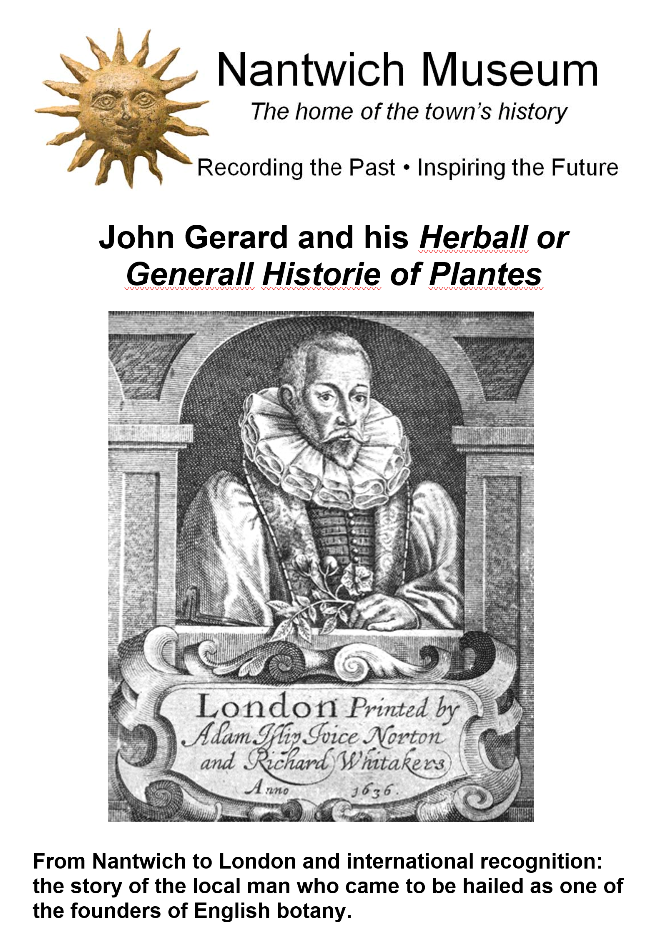
https://nantwichmuseum.org.uk/product/john-gerard-and-his-herball-or-generall-historie-of-plantes/
The renowned herbalist John Gerard (c1545-1612) was born in Nantwich and went to school in Wistaston. Although he left Cheshire to take up an apprenticeship in London, he first became interested in plants and their medicinal qualities in and around Nantwich and often refers to his hometown in his famous work The Herball or Generall Historie of Plantes, first published in 1597:
Horse Radish…have I found wilde in sundry places, as at Namptwich in Cheshire, in a place called the Milne-eye…[Mill Island]
[Canterbury Bells]…are called, at the Namptwich in Cheshire, where I had my beginning, Ladies Smockes…
The Herball became a standard reference work for herbalists and botanists for over 200 years; a copy can be seen in Nantwich Museum.
In the Herball, Gerard mentions a member of the Wilbraham family, the ‘worshipfull Gentlewoman, Mistresse Anne Wylbraham’, who was an aunt of Thomas Wilbraham who developed the walled garden at Townsend House. Mistress Wilbraham made experimental medicines for her neighbours, notably a cure for the ague [fever] using the root of the water dock ‘with good successe’.
It is known that Gerard was acquainted with Sir Walter Raleigh (also a botanical collector) and it has been suggested that Gerard and William Shakespeare shared an interest in folklore. The 19th-century designer William Morris, a leading figure in the Arts and Crafts Movement, was inspired by Gerard’s illustrations in the Herball.
The NWGS believes that the walled garden, appropriately restored, would be a fitting tribute to John Gerard, commemorating his contributions to botany and herbs, and his connections with Nantwich.
